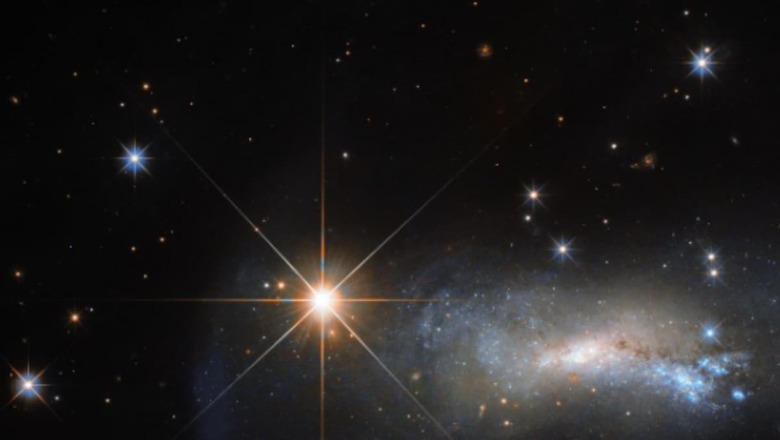
views
Astronomers utilise Hubble to document the appearance of numerous emerging galaxies throughout cosmic time. It’s comparable to keeping a scrapbook of a child’s developmental trajectory. This is made feasible by the mathematical link between cosmic distance and time — the further back in time Hubble looks, the deeper it can probe into space. Put simply, astronomers are trying to complete a millennium-long project of mapping the universe and its history. This time, the space agency shared a picture of the brightest single star. The picture displays a galaxy and a star located in the Lacerta constellation (The Lizard).
NASA provided further information about this remarkable astronomical object by stating that it is a million times nearer to us than the galaxy, which is located over 45 million light-years away. They said that a star can only outshine a galaxy made up of billions of stars if it is relatively near to one another.
The star in question is somewhat of a nuisance, they said, and is what astronomers refer to as a “foreground star.” Its brightness has the potential to interfere with fainter light coming from things farther away that astronomers wish to analyse.
Speaking further about the foreground stars, NASA said that a method known as microlensing allows one to temporarily align a background star with a foreground star and utilise its gravitational pull to magnify the light of that star. The characteristics of the planets that are accompanied by the foreground star can be inferred from the precise time and degree of light amplification.
View this post on Instagram
The Space Agency went on to give an image description, “Amid a backdrop of galaxies, a star shines brightly with a white-yellow light, slightly left of center.” It said that the star contains eight lengthy spikes, or diffraction spikes, which are artefacts in imaging.
A galaxy can be seen to the right of the star; stars can be seen among clouds of gas and dust, and some of the galaxy has bluish light shining through it. The remainder of the black backdrop of space is scattered with other galaxies and stars. The post has more than 4 lakh likes on the social media platform.




















Comments
0 comment